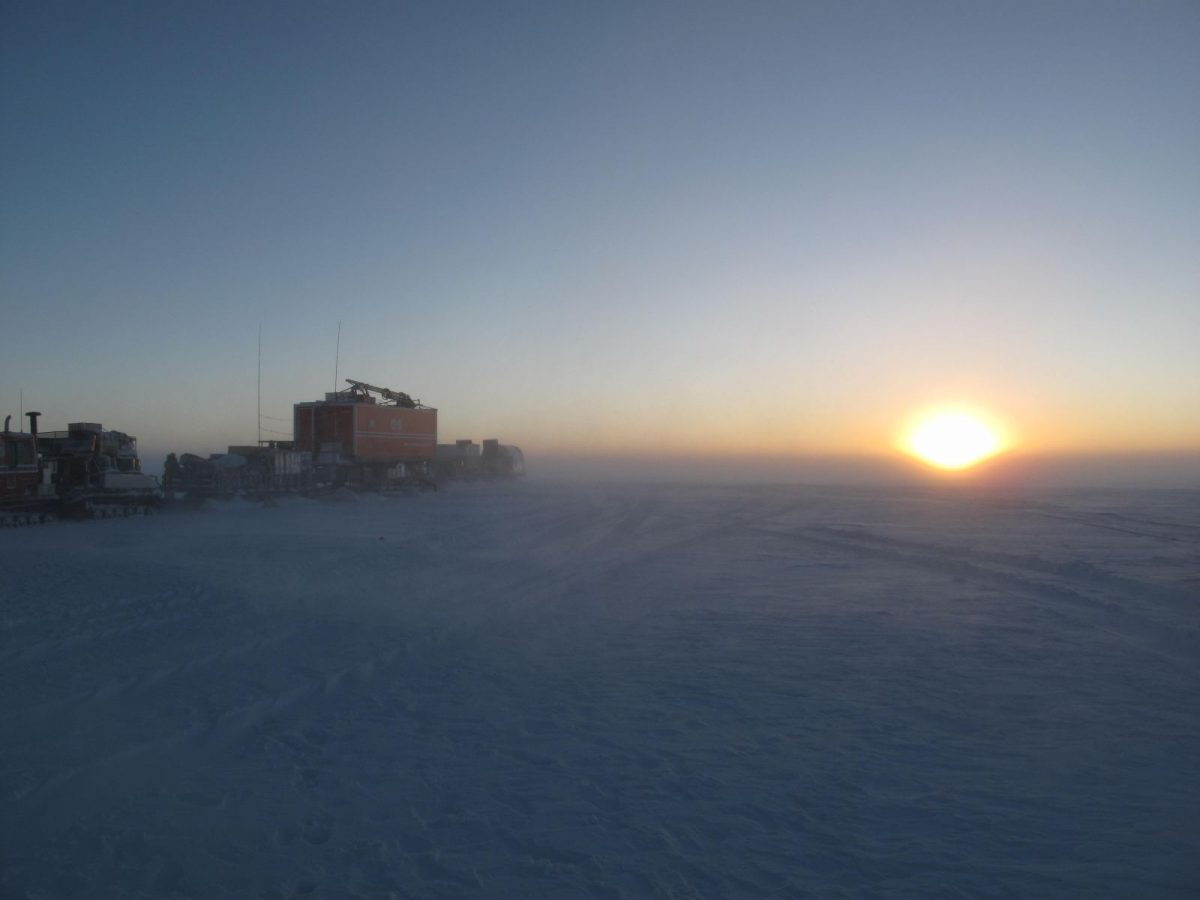Climatic yin and yang: from the coldest places on Earth to a spot that just set an astonishing new heat record
Posted on Categories Discover Magazine

A science traverse in 2007 to 2009 crossed the East Antarctic Plateau in late summer. The coldest conditions on Earth occur in this region few months later, in July and August, during the polar night. (Photo: Ted Scambos, NSIDC.)
We’ve now got new insight into just how extreme conditions on our planet can get — at opposite ends of the thermometer.
In a new study, a team of researchers has found that some sites in Antarctica get as cold as minus 98 degrees Celsius.
That’s 144 degrees below zero on the Fahrenheit scale!
According to the scientists, led by Ted Scambos of the National Snow and Ice Data Center, this is about as cold as it is possible to get at Earth’s surface.
Meanwhile, meteorologist Jeff Masters at the Weather Underground Category 6 blog is reporting today that “a singularly unenviable heat mark� was set on Tuesday in Quriyat, Oman: a 24-hour low temperature of 42.6 degrees C.
That’s a daily LOW of 108.7 F!
A low of 109°F?? If the data are confirmed, Tuesday’s minimum temperature of 42.6°C (108.7°F) at Quriyat, Oman, is a new all-time world record https://t.co/skStu1W0ie pic.twitter.com/1OrRHF2hoY
— Weather Underground (@wunderground) June 27, 2018
As Masters writes in his story:
According to weather records expert Maximiliano Herrera, this sets a new world record for the hottest 24-hour-minimum temperature ever recorded. Herrera says that the previous high-minimum temperature record for any 24-hour period was 41.9°C (107.4°F), set at nearby Khassab Airport in Oman on June 27, 2011.
According to Masters, a strong upper-level ridge of high pressure combined with humid marine air in Quriyat — which sits on the Gulf of Oman — has kept the city from cooling off at night.
Meanwhile, back in Antarctica . . . Scambos and his colleagues had reported preliminary data on the coldest of the cold temperatures five years ago, using data acquired from satellites. They found that when there are persistent clear skies and light winds during winter, spots in East Antarctica reach as low as minus 93 F.
With their new work, the scientists found that the coldest of the cold temperatures are actually five degrees C lower than that. Moreover, they determined that in addition to clear skies and light winds, “the air must also be extremely dry, because water vapor blocks the loss of heat from the snow surface,� according to a release from the snow and ice center.
Some details from the release:
The researchers observed the ultra-low temperatures in small dips or shallow hollows in the Antarctic Ice Sheet where cold, dense, descending air pools above the surface and can remain for several days. This allows the surface, and the air above it, to cool still further, until the clear, calm, and dry conditions break down and the air mixes with warmer air higher in the atmosphere.
The lowest air temperature on Earth measured with instruments on the ground is minus 89.2 C, or minus 129 F. That was on July 23, 1983 at Vostok Station in Antarctica. But actual measuring stations are few and far between in Antarctica. That’s why the scientists decided to use satellite data collected during the Antarctic polar night to see whether they might find even lower temperatures.
Their work “reveals a broad region of the high East Antarctic Plateau above Vostok that regularly reaches snow surface temperatures of �90 C and below,� the scientists write in their paper. And in spots, temps plunge quite a bit lower than that.